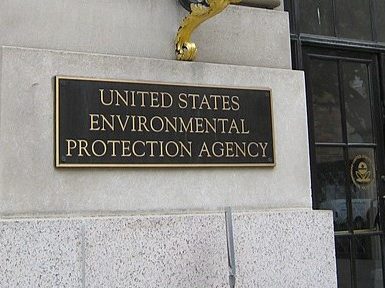Representatives from Arizona’s most sustainable companies — Microsoft, Intel, Arizona Public Service, Ewing Irrigation, Salt River Project and others — met with legislative leaders at the state Capitol last week to talk about the state’s water supply and how to protect it for future development.
Businesses will continue to do their part to “stretch the benefits of every drop of water Arizona has,” said Todd Reeve, director of Business for Water Stewardship (BWS), which brought elected officials and industry stakeholders together for the event. BWS works with businesses to promote water conservation and replenishment and “forward thinking” policies.
“We want to be in Arizona forever to invest in communities and jobs and we need to have certainty around water in the long term,” Reeve said.
Most sustainable companies
Companies represented at the meeting included Microsoft, Intel, Arizona Public Service, Salt River Project, Ewing Irrigation and Landscape Supply, the Arizona Diamondbacks, and M Culinary. Business and advocacy groups also were present including Water for Arizona Coalition, Arizona Commerce Authority, Valley Partnership, and the Arizona Chamber of Commerce and Industry.
All do business in Arizona and are meeting or surpassing goals to protect water and the environment. Microsoft, for example, is building three data centers in Goodyear and El Mirage that will run solely on renewable energy. More than half of the year, the centers will use outside air instead of water for cooling. Intel, which operates semiconductor plants in Arizona, replenishes at least 80 percent of the water it uses and is funding projects to ratchet that up to 100 percent by 2025.
Major year for new water policy
A 20-year drought will make this a key year for water policy.
Congress in 2019 approved the seven-state Drought Contingency Plan (DCP) that instituted mandatory cutbacks and conservation measures to shore up the Colorado River, the most important water resource for the Southwest. The river system supports almost 40 million people in the region and makes up 40 percent of Arizona’s water supply.
That was a first step in a new water era. Water leaders in Arizona are now preparing for the next DCP in 2026 when everyone expects more cutbacks. Other alternatives to augment the system also are being evaluated, including desalination.
What’s next for water policy
House Speaker Rusty Bowers and Senate President Karen Fann and other legislative leaders spoke at the meeting about what’s next for Arizona’s water future.
Top issues in 2020 will focus on water conservation but also how to “move that water around,” Fann said.
Everyone needs to “work outside of the box” to find innovative solutions to keep Arizona open for business, she said.
“We realize that water is truly the gold of economic development in Arizona. It not only controls our growth and the people moving here but our industry and businesses,” Fann said.
Speaker Bowers said that it may be time to start seriously evaluating desalination technology to tap into Arizona’s massive stores of brackish water, groundwater with a high salt content.
Top concerns: funding, groundwater, water transfers
This year, about 40 bills have been introduced at the state Legislature to tackle water sustainability, including new funding for water protection and additional staffing for the state water regulatory agency, the Arizona Department of Water Resources (ADWR).
Several bills touch on two critical areas:
Groundwater: The last major legislation dealing with groundwater legislation was Arizona’s 1980 Groundwater Management Act, which requires a 100-year supply of water before a housing development can break ground.
As groundwater supplies are depleting, a number of bills have been introduced to start dealing with better management and protection, including mandated measuring and annual reporting for permitted groundwater wells.
There will be a focus on rural areas this year.
Pinal County’s agricultural industry will be under intense scrutiny during these discussions as it seeks water management methods to ensure its sustainability.
Water transfers: Bills are moving forward to deal with another issue in this new era of climate change — water transfers — and whether to restrict or allow them through monitoring and regulation. With declining Colorado River supplies, urban areas are looking to purchase water from water-rich tribes and rural areas.
For the first time, the director of the ADWR, Tom Buschatzke, is preparing recommendations for the federal government over a water transfer.
The matter involves the town of Queen Creek that initiated the purchase of Colorado River water from GSC Farm, LLC, which owns land in Cibola Valley in La Paz County near the river. GSC agreed to fallow agricultural land in exchange.
“The department has not ever addressed water transfer from the river,” Buschatzke said. “This will set precedent.”
Public comment on the deal recently closed. A majority of the comments were in opposition, he said.
On a positive note
Meanwhile, Buschatzke, who co-chaired the statewide steering committee that negotiated Arizona’s DCP, said there are reasons to be optimistic.
The DCP is working, and while water will continue to be a major challenge, five-year projections are not looking nearly as dire as they did a year ago.
















Add comment